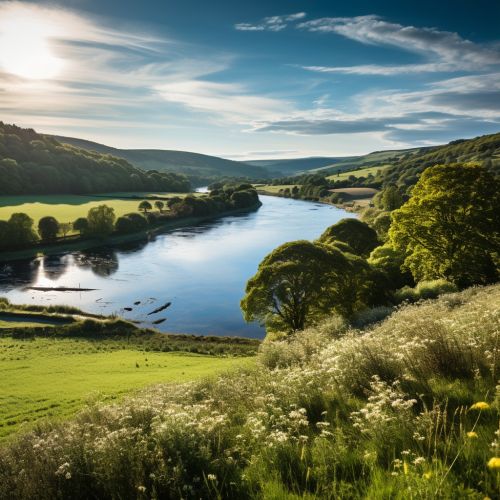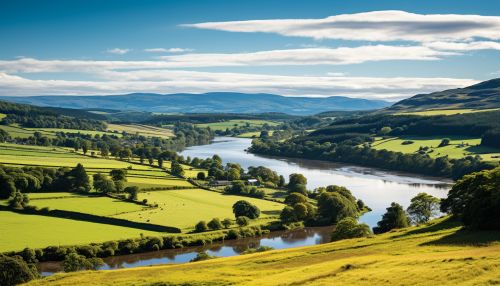Tay
Overview
The River Tay is the longest river in Scotland and the seventh-longest in the United Kingdom. It originates in the highlands and flows through central Scotland into the North Sea. The river is known for its scenic beauty and rich biodiversity, including a thriving population of Atlantic salmon. The Tay also holds historical significance, with numerous archaeological sites and historic landmarks along its banks.
Geography
The Tay originates on the slopes of Ben Lui, in the western highlands of Scotland. It flows eastward, passing through Loch Tay, before turning southeast and flowing through the city of Perth. The river then continues eastward, passing through the Tay Estuary, before emptying into the North Sea near the city of Dundee. The Tay's total length is approximately 188 kilometers (117 miles), making it the longest river in Scotland.


Hydrology
The Tay's drainage basin covers an area of approximately 5,200 square kilometers (2,000 square miles), making it the largest in the UK. The river's flow is influenced by the high rainfall in its catchment area, which results in a high discharge rate. The Tay's flow is also influenced by several tributaries, including the Tummel, Isla, and Earn rivers.
Biodiversity
The Tay is home to a rich variety of wildlife, including several species of fish, birds, and mammals. The river is particularly known for its population of Atlantic salmon, which are an important species for recreational fishing in Scotland. Other notable species found in the Tay include the European otter, kingfisher, and osprey.
Human Interaction
Humans have interacted with the Tay since prehistoric times, with numerous archaeological sites found along the river's banks. In the Middle Ages, the river was an important trade route, with the city of Perth serving as a major port. Today, the Tay is a popular destination for recreational activities, including fishing, boating, and wildlife watching.
Environmental Issues
Like many rivers, the Tay faces several environmental challenges, including pollution, habitat loss, and the impacts of climate change. Efforts are underway to address these issues and ensure the long-term health of the river and its ecosystems.
